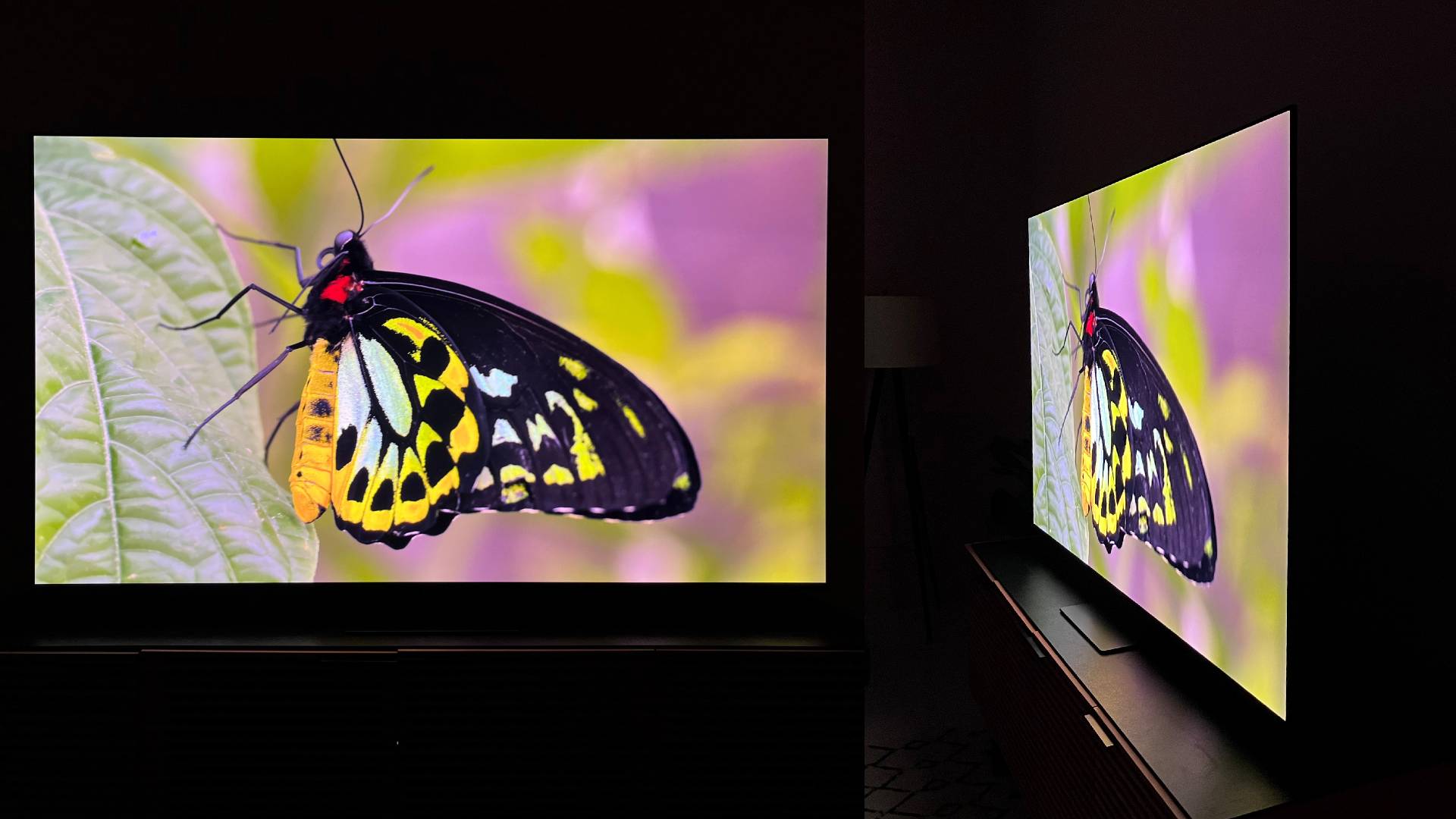Samsung S90C: everything we know about the cheaper QD-OLED TV
The less expensive alternative to the Samsung S95C could still be one of the brighter OLED TVs of 2023

The Samsung S90C QD-OLED is a more budget-friendly alternative to the firm’s upcoming Samsung S95C. While both of these new Samsung QD-OLEDs share similar features, the S90C is paired-down in certain aspects compared to its more premium sibling.
Samsung has been relatively tight-lipped on the S90C QD-OLED, but we know enough about the key basics of the panel and how it compares to the S95C and 2022’s Samsung S95B. Below, we’ll explain the similarities and differences between the Samsung QD-OLEDs, while also going over the sizes, specs and early pricing info of the S90C.
Don't forget to check out our early hands-on Samsung S95C review for more on the quality to expect from its lower-priced version.
Samsung S90C QD-OLED: Price and release date
The high-end S95C is due in spring 2023, and the Samsung S90C QD-OLED is likely to follow a little behind. For comparison, the S95B was launched in June of last year. We only have European and US prices for the S90C so far, but by doing some quick currency conversions, these are the predicted prices for the cheaper QD-OLED:
- 55-inch: €2,000 / $1,899 (around £1,799 / AU$3,100)
- 65-inch: €2,000 ($2,999 / £2,499 / AU$4,400)
- 77-inch: €4,000 / $3,599 (£3,599 / AU$6,5000)
Again, the above are predicted prices for the UK and Australia (and the 65-inch model in the US, which has yet to receive official pricing ). Hopefully Samsung will announce the official figures shortly. Going by the costs of last year’s S95B, we expect the S95C to cost several hundred more than the S90C across regions.

Samsung S90C QD-OLED: Design and features
Building on the foundations of the S95B, the S90C QD-OLED mixes the best of both OLED and QLED tech. Unlike existing LG OLEDs, these new Samsung panels deliver the same perfect blacks of a traditional OLED screen, but boost brightness and color thanks to the presence of a quantum dot filter.
The biggest difference between Samsung’s 2023 QD-OLEDs comes down to form factor. The S95C comes with the Samsung One Connect Box, which lets you neatly connect your HDMI cables away from the TV – the box connects to the set from a single cable. Without the need for traditional HDMI outputs on the rear of the set, the S95C will be slimmer than the S90C, as the cheaper model contains integrated connections, more like the majority of TVs.
Sign up for breaking news, reviews, opinion, top tech deals, and more.
The audio setup of the S90C will also be less advanced than the S95C. While the more expensive QD-OLED gets a 4.2.2 channel speaker system, the S90C is limited to a 2.2.2 setup with top-firing driver. In addition, the S90C will use Samsung's 'Object Tracking Sound Lite' system for positioning sounds to match what's on-screen, while the S95C uses the more advanced 'Object Tracking Sound+', so it just won't be as immersive an audio experience from the set (not a problem if you use one of the best soundbars with it).
Samsung claims its new QD-OLEDs offer “unrivaled brightness, vivid color mapping and smart 4K upscaling with AI detail restoration”, while also delivering the excellent gaming-focused specs you’d expect from a new Samsung TV. Both the S95C and S90C have four HDM1 2.1 ports that support 4K up to 144Hz and VRR.
To further boost these QD-OLEDs’ gaming credentials, both the S95C and S90C offer 4K streaming support for Nvidia GeForce Now, as well as support for Xbox cloud gaming.

When it comes to brightness, we’re expecting the S90C to be a slight step-down from the S95C. The S90C seems to use a less advanced brightness algorithm than its pricier sibling – the S95C uses 'Quantum HDR OLED Plus', while the S90C features with regular 'Quantum HDR OLED'.
We don’t yet know how much of a difference these two systems will have on peak brightness, but at a minimum we'd expect the S90C to have the same brightness as last year's Samsung S95B model. That hit a max peak brightness level of 1,060 nits in Samsung’s Movie and Filmmaker modes in our Samsung S95B review.
For context, we've now measured the S95C at 1,374 nits at peak brightness, so the question is where the S90C will fall between these two figures! For even more context, the LG C2 OLED TV hits about 800 nits of peak brightness, so you're sure to get a leg up on the competition from the S90C.
Samsung S90C: What do we think so far?
Though we’ve yet to go hands-on with the S90C for any real testing, based on the specs it could be an excellent alternative to the more expensive S95C. Yes, it will be bulkier and its speaker system is a downgrade compared to the S95C, but when it comes to key screen features, the two QD-OLEDs seem reasonably well matched, especially compared to the best OLED TVs that are also more in the mid-range.
If the Samsung S95C is already shaping up to be one of the best TVs of the year. If the S90C comes close to matching its more costly cousin, but for notably less cost, it may end up being one of our favorite OLED panels of the year.
Dave is a freelancer who's been writing about tech and video games since 2006, with bylines across GamesRadar+, Total Film, PC Gamer, and Edge. He's been obsessed with all manner of AV equipment ever since his parents first bought him a hideously garish 13-inch CRT TV (complete with built-in VCR, no less) back in 1998. Over the years he’s owned more plasma and OLED TVs than he can count. On an average day, he spends 30% of his waking existence having mild panic attacks about vertical banding and dead pixels.
